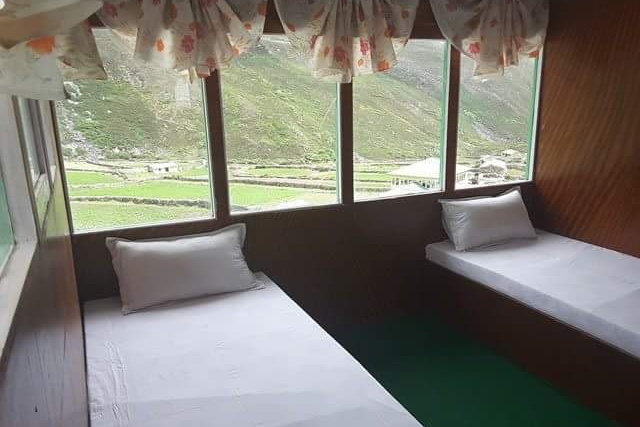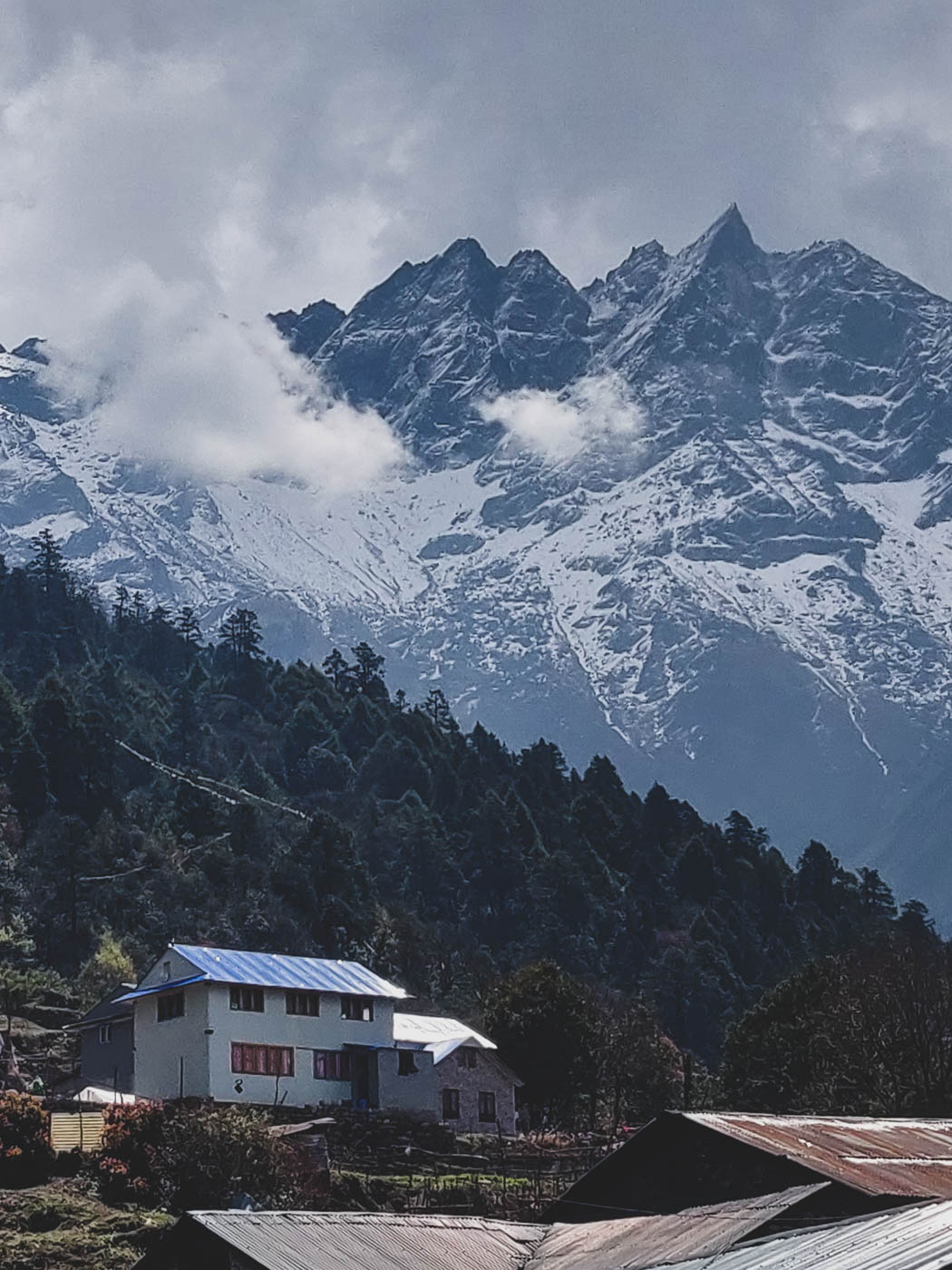|
Mountain Trek / Everest Region / Nepal Gokyo Lakes and Renjo Pass TrekNext tentative Date: Available as a Private Trek on a date of your preference.
Cross the exhilarating Renjo La Pass, trek through pristine landscapes and experience the rich Sherpa culture, all while taking in breathtaking views of Everest and the stunning Gokyo Lakes. |
Overview
The Gokyo Lakes with Renjo Pass Trek offers an awe-inspiring journey through some of Nepal’s most breathtaking landscapes. Starting from the vibrant village of Lukla, the trail leads through lush forests, Sherpa settlements, and ancient monasteries, immersing you in the region’s rich cultural heritage. The highlight of this trek is crossing the Renjo La Pass which rewards trekkers with panoramic views of Everest, Lhotse, and Cho Oyu and witnessing the stunning turquoise Gokyo Lakes, set against the backdrop of towering snow-capped peaks. Along the way, you may encounter yaks grazing in alpine pastures, Himalayan tahr, and musk deers. This trek blends natural beauty, adventure, and cultural discovery, making it a truly unforgettable experience.
Highlights
| Renjo La Pass Adventure: Cross the thrilling Renjo La Pass at 5,360 meters, offering breathtaking panoramic views of Everest, Lhotse, Makalu, and Cho Oyu, providing a dramatic high-altitude experience. | |
| Serene Gokyo Lakes: Explore the pristine, turquoise Gokyo Lakes, surrounded by rugged Himalayan peaks, offering one of the most serene and scenic locations in the Everest region. | |
| Gokyo Ri Summit Views: Climb Gokyo Ri for unparalleled sunrise or sunset views of Everest, Cho Oyu, and the Ngozumpa Glacier, one of the longest glaciers in the Himalayas. | |
| Sherpa Culture and Heritage: Immerse yourself in the vibrant Sherpa culture as you pass through villages like Namche and Khumjung, visit monasteries, and interact with the warm, hospitable locals. | |
| Diverse and Scenic Trails: Experience the changing landscapes, from rhododendron and pine forests to barren, high-altitude passes and glacier moraines, offering a dynamic trekking experience. | |
| Wildlife Encounters: Spot unique wildlife such as Himalayan tahr, colorful pheasants, and yaks, with the possibility of glimpsing the elusive snow leopard in remote areas. | |
| Less Crowded Trekking Route: Compared to the more popular Everest Base Camp route, this trek offers a more peaceful and off-the-beaten-path experience while still delivering spectacular views and adventure. |
The Gokyo Lakes Trek is a well-rounded adventure suitable for a diverse range of trekkers, offering a blend of natural beauty, cultural experiences, and a sense of accomplishment as you reach the high-altitude lakes and viewpoints.
While the trek does involve some challenging sections, it is generally considered moderate in terms of difficulty. As long as you have a basic level of fitness and can walk for 4-7 hours a day, you should be able to complete the trek. To ensure safety, the itinerary is designed with acclimatization stops along the way. During the trek, you'll only need to carry a day bag, as our dedicated porters will take care of the rest of your belongings. There are comfortable teahouses with proper bedding serving warm food along the route.
Best time to go
JanFebMarAprMayJunJulAugSepOctNovDec
JanFebMarAprMayJun
JulAugSepOctNovDec
Monsoon glistens the hills with deep colors of greens and blooming wildflowers in the meadowy patches. The average temperatures hover between 15°C to 20°C (59°F to 68°F) and are humid. However, it also brings landslides, obstructed roads, slippery trails, and leeches in dozens if not more. There are high chances of flight cancellations, as well as rockfalls and landslides on the roads leading up to the trailheads. While early June and late September are still advisable for trekking, July and August are out of the option. Not many people trek during peak monsoon, so hotels aren’t fully operational.
| Group Sizepax | Fixed Departureprices per person | Regularprices per person |
| 3 | Inquire | |
| 4 -7 | Inquire | |
| 8 & up | Inquire |
|
|
|
|
|
Prices valid until Dec 31st, 2025

Gokyo Lakes, Khumbu mountain range and Ngozumpa , the longest glacier in Nepal, seen from Gokyo Ri

Still waters of Gokyo Lake catch reflection of its rocky surrounding

A lady in Pangboche clad in vibrant Sherpa attire called Bakkhu

Gorgeous view of Everest and Lhotse seen from the walk from Namche towards Tengboche

Buddhist prayer wheel in Namche outskirts beneath Kongde mountain

Yaks are commonly used for their wool, milk, meat and hide. Yak cake, dried yak dung, is used as fuel in the kitchen

From a tiny hamlet, Namche has steady grown in the last couple of decades to become a sizeable and dense town

Everest appears as you make the climb to Gokyo Ri
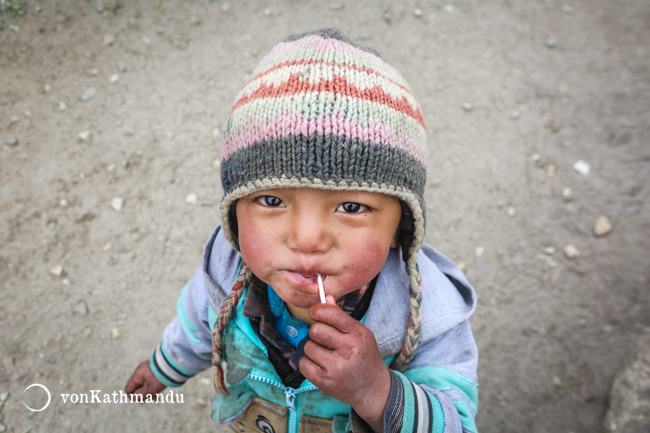
Little Sherpa kid. Cold wind and low moisture leads to rosy red cheeks in highlands
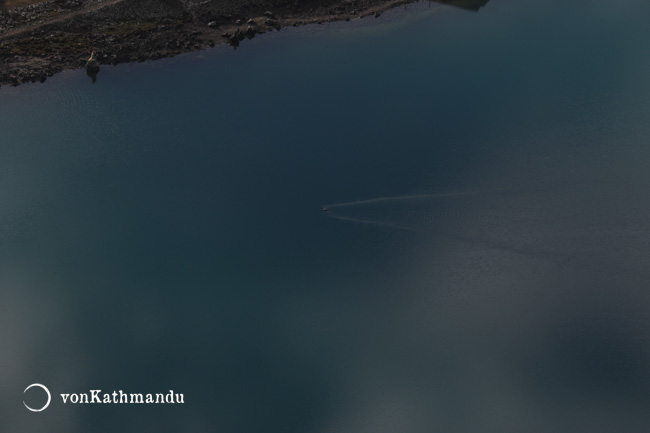
Bird taking a swim in Gokyo Lake

Mountains appear seemingly at an eye level from Gokyo Ri

Mornings in mountains are a sight to behold

Himalayan Tahrs are not an uncommon sight on the trek

Hazy morning in Lukla
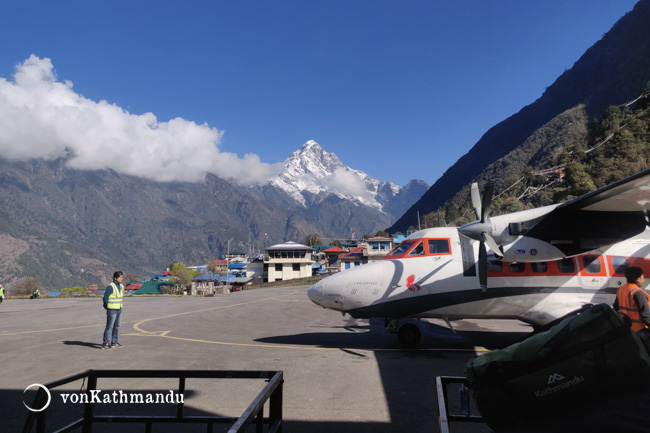
Perched on a hillside, Lukla Airpot is as thrilling as it is picturesque

The ampitheatre of Namche Bazaar, often called the gateway to Everest

Photrse village is a secluded and peaceful village that sits on a small plateau amidst surrounding rugged terrain
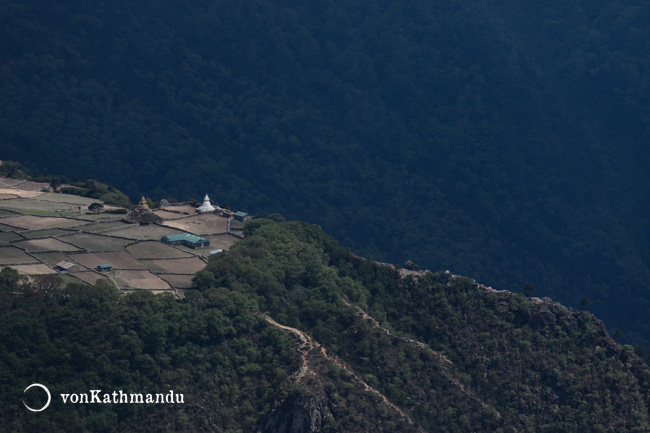
The old and the new chhortens of Phortse village
Itinerary
|
Day 1 |
Kathmandu - Manthali - Lukla - Monjo |
|
|
Day 2 |
Monjo - Namche |
|
|
Day 3 |
Namche - Khumjung |
|
|
Day 4 |
Khumjung - Dole |
|
|
Day 5 |
Dole - Machhermo |
|
|
Day 6 |
Machhermo - Gokyo |
|
|
Day 7 |
Gokyo - Gokyo Ri - Gokyo |
|
|
Day 8 |
Gokyo - Renjo Pass - Lungden |
|
|
Day 9 |
Lungden - Namche |
|
|
Day 10 |
Namche - Lukla |
|
|
Day 11 |
Lukla - Manthali - Kathmandu |
|
|
Day 1 |
Kathmandu - Manthali - Lukla - Monjo |
|
|
Drive from Kathmandu to Manthali Airport 3.5 to 4.5 hrs An early morning drive from Kathmandu on winding roads takes us to Manthali, a tiny little town in Ramechhap district. Manthali Airport has been the gateway to Lukla since 2019. We start around 2 or 3 am in the morning following the Sunkoshi and Tamakoshi rivers, and reach Manthali right on time to catch the 6:30 or 7 am flight to Lukla. Note: All the flights to Lukla operate from Manthali Airport, Ramechhap during the months of March, April, May, October, November and December. |
|
|
Fly from Manthali to Lukla 25 mins A short, scenic and exhilarating mountain flight takes us from Manthali to Lukla, the gateway of Everest Region. |
|
|
Trek from Lukla to Monjo 5 to 6 hrs | 12 kms (7.5 mi) Highest point: Lukla at 2860m (9383ft) | Gain/drop: +604m/-638m (+1982ft/-2093ft) We meet the rest of our crew, arrange our baggages, have breakfast, and embark on a journey to Monjo, passing exciting suspension bridges and tiny village settlements following the Koshi river. If the flight is delayed causing late hike start, we will call it a day in Phakding (1-2hrs before Monjo). |
Meals Included: Breakfast
Accommodation: Mountain Lodge
|
Day 2 |
Monjo - Namche |
|
|
Trek from Monjo to Namche 4 to 6 hrs | 6 kms (3.5 mi) Highest point: Namche at 3440m (11286ft) | Gain/drop: +976m/-354m (+3202ft/-1161ft) We walk northward along the banks of Koshi and reach the entry point of Sagarmatha National Park, from where the gruelling uphill awaits before we reach the amphitheater town of Namche, nestled perfectly atop a hill. Spend the rest of the day exploring monasteries, mountain museums, tiny cafes and coffee bars. |
Meals Included: Breakfast
Accommodation: Mountain Lodge
|
Day 3 |
Namche - Khumjung |
|
|
Trek from Namche to Khumjung (Acclimatization) 4 to 5 hrs | 7 kms (4.5 mi) Highest point: Syangboche at 3880m (12730ft) | Gain/drop: +490m/-127m (+1608ft/-417ft) We take it slow and easy to the peaceful and serene settlement of Khumjung today. We stop by Hotel Everest View for a stunning view of the Everest mountain chain on the way. The green-roofed valley of Khumjung and Khunde offers several options to explore, including a monastery housing a (supposed) yeti scalp and a school established by Edmund Hillary. |
Meals Included: Breakfast
Accommodation: Mountain Lodge
|
Day 4 |
Khumjung - Dole |
|
|
Trek from Khumjung to Dole 5 to 6 hrs | 8.5 kms (5 mi) Highest point: Dole at 4040m (13255ft) | Gain/drop: +915m/-1102m (+3002ft/-3615ft) Today's trek follows scenic forest trails with several delightful viewpoints on the way to Dole. The Dudhkoshi River keeps us company as we encounter a mix of steep ascents (to Mong La and Dole) and descents (to Phortse Tenga). |
Meals Included: Breakfast
Accommodation: Mountain Lodge
|
Day 5 |
Dole - Machhermo |
|
|
Trek from Dole to Machhermo 2 to 3 hrs | 5 kms (3 mi) Highest point: Machhermo at 4470m (14665ft) | Gain/drop: +466m/-109m (+1529ft/-358ft) As we are at high elevation, we proceed at a gentle pace, and our trek is relatively short today. We start the day with a steep climb, followed by a gradual ascent through trails of scrub junipers. By lunchtime, we reach Machhermo. |
|
|
Acclimatization Hike 1.5 to 2 hrs | 3 kms (2 mi) Highest point: Hill above Macchermo at 4700m (15420ft) | Gain/drop: +250m/-250m (+820ft/-820ft) Hike around the surrounding hills for better acclimatization. |
Meals Included: Breakfast
Accommodation: Mountain Lodge
|
Day 6 |
Machhermo - Gokyo |
|
|
Trek from Machhermo to Gokyo 3 to 4 hrs | 6.5 kms (3.5 mi) Highest point: Gokyo at 4750m (15584ft) | Gain/drop: +450m/-88m (+1476ft/-289ft) The trails from Machhermo are not too challenging, with only a few steep climbs. Along the way, we pass two beautiful turquoise Gokyo lakes before reaching the third one. While the first lake is small, the second one stretches quite a bit. The settlement of Gokyo lies next to the third lake, where we have lunch at our tea house and settle down for the day. |
|
|
Afternoon exploration to Gokyo lakes |
Meals Included: Breakfast
Accommodation: Mountain Lodge
|
Day 7 |
Gokyo - Gokyo Ri - Gokyo |
|
|
Sunset hike to Gokyo Ri 3 to 4 hrs | 4 kms (2.5 mi) Highest point: Gokyo Ri at 5360m (17585ft) | Gain/drop: +596m/-596m (+1955ft/-1955ft) You have a full day to explore the stunning Gokyo valley and its surrounding lakes. Gokyo Ri, the highlight of the trip, is just a couple of hours' trek away. Both sunrise and sunset from Gokyo Ri offer spectacular golden skies stretching over the horizon. Depending on the weather and your preference, plan with your guide to choose the best time for the hike. |
Meals Included: Breakfast
Accommodation: Mountain Lodge
|
Day 8 |
Gokyo - Renjo Pass - Lungden |
|
|
Trek from Gokyo to Lungden via Renjo Pass 7 to 8 hrs | 11 kms (7 mi) Highest point: Renjo La Pass at 5360m (17585ft) | Gain/drop: +624m/-1041m (+2047ft/-3415ft) Today, our trail meanders through high-altitude terrain, revealing glacial lakes and rocky ridges. Renjo pass offers views of the iconic Himalayan peaks, including Everest, Lhotse, and Ama Dablam. |
Meals Included: Breakfast
Accommodation: Mountain Lodge
|
Day 9 |
Lungden - Namche |
|
|
Trek from Lungden to Namche 7 to 8 hrs | 17 kms (10.5 mi) Highest point: Lungden at 4380m (14370ft) | Gain/drop: +195m/-1150 (+640ft/-3773ft) The trail is very long involving some steep ascents and descents. Forested paths will accompany us as we pass several villages before reaching Namche, where a hot shower and celebratory dinner await. |
Meals Included: Breakfast
Accommodation: Mountain Lodge
|
Day 10 |
Namche - Lukla |
|
|
Trek from Namche to Lukla 6 to 7 hrs | 18 kms (11 mi) Highest point: Namche at 3440m (11286ft) | Gain/drop: +932m/-1560m (+3058ft/-5118ft) The final trekking day is also a long one. We leave Namche and take the same route back to Lukla. The team will gather to share laughs and maybe raise a glass or two before flying out of Lukla the next morning. We thank porters and assistant guide, and bid them farewell. |
Meals Included: Breakfast
Accommodation: Mountain Lodge
|
Day 11 |
Lukla - Manthali - Kathmandu |
|
|
Fly from Lukla to Manthali airport 20 mins Fly from Lukla to Manthali airport |
|
|
Drive from Manthali to Kathmandu 5 to 6 hrs With memories to cherish a lifetime, we hop on our car and drive back to Kathmandu on the same roads we took the first day. |
Meals Included: Breakfast
Mountain Lodge |
X Close Accommodation Popup
X Close Popup
Nepal
Mountain lodges are the basic accommodation set up by locals to cater to trekkers in the trails. The common features across all lodges are standard rooms, a spacious and heated dining hall, and a restaurant with a menu. The rooms in mountain lodges generally have two or three twin beds with a mattress and blanket. If you are used to sleeping warm, we highly recommend bringing your own sleeping bag and liner. Other amenities could be a table, hanger, and dustbin but do not expect to have charging ports and attached toilets in the rooms. Moreover, it is mandatory to have meals in the facility you’re staying at.
Room Amenities
| • | Shared Toilet |
Property Amenities
| • | Restaurant and Bar | • | Outdoor Seating | • | Mountain Views |
Mountain Lodge |
X Close Accommodation Popup
X Close Popup
Nepal
Mountain lodges are the basic accommodation set up by locals to cater to trekkers in the trails. The common features across all lodges are standard rooms, a spacious and heated dining hall, and a restaurant with a menu. The rooms in mountain lodges generally have two or three twin beds with a mattress and blanket. If you are used to sleeping warm, we highly recommend bringing your own sleeping bag and liner. Other amenities could be a table, hanger, and dustbin but do not expect to have charging ports and attached toilets in the rooms. Moreover, it is mandatory to have meals in the facility you’re staying at.
Room Amenities
| • | Shared Toilet |
Property Amenities
| • | Restaurant and Bar | • | Outdoor Seating | • | Mountain Views |
Mountain Lodge |
X Close Accommodation Popup
X Close Popup
Nepal
Mountain lodges are the basic accommodation set up by locals to cater to trekkers in the trails. The common features across all lodges are standard rooms, a spacious and heated dining hall, and a restaurant with a menu. The rooms in mountain lodges generally have two or three twin beds with a mattress and blanket. If you are used to sleeping warm, we highly recommend bringing your own sleeping bag and liner. Other amenities could be a table, hanger, and dustbin but do not expect to have charging ports and attached toilets in the rooms. Moreover, it is mandatory to have meals in the facility you’re staying at.
Room Amenities
| • | Shared Toilet |
Property Amenities
| • | Restaurant and Bar | • | Outdoor Seating | • | Mountain Views |
Mountain Lodge |
X Close Accommodation Popup
X Close Popup
Nepal
Mountain lodges are the basic accommodation set up by locals to cater to trekkers in the trails. The common features across all lodges are standard rooms, a spacious and heated dining hall, and a restaurant with a menu. The rooms in mountain lodges generally have two or three twin beds with a mattress and blanket. If you are used to sleeping warm, we highly recommend bringing your own sleeping bag and liner. Other amenities could be a table, hanger, and dustbin but do not expect to have charging ports and attached toilets in the rooms. Moreover, it is mandatory to have meals in the facility you’re staying at.
Room Amenities
| • | Shared Toilet |
Property Amenities
| • | Restaurant and Bar | • | Outdoor Seating | • | Mountain Views |
Mountain Lodge |
X Close Accommodation Popup
X Close Popup
Nepal
Mountain lodges are the basic accommodation set up by locals to cater to trekkers in the trails. The common features across all lodges are standard rooms, a spacious and heated dining hall, and a restaurant with a menu. The rooms in mountain lodges generally have two or three twin beds with a mattress and blanket. If you are used to sleeping warm, we highly recommend bringing your own sleeping bag and liner. Other amenities could be a table, hanger, and dustbin but do not expect to have charging ports and attached toilets in the rooms. Moreover, it is mandatory to have meals in the facility you’re staying at.
Room Amenities
| • | Shared Toilet |
Property Amenities
| • | Restaurant and Bar | • | Outdoor Seating | • | Mountain Views |
Mountain Lodge |
X Close Accommodation Popup
X Close Popup
Nepal
Mountain lodges are the basic accommodation set up by locals to cater to trekkers in the trails. The common features across all lodges are standard rooms, a spacious and heated dining hall, and a restaurant with a menu. The rooms in mountain lodges generally have two or three twin beds with a mattress and blanket. If you are used to sleeping warm, we highly recommend bringing your own sleeping bag and liner. Other amenities could be a table, hanger, and dustbin but do not expect to have charging ports and attached toilets in the rooms. Moreover, it is mandatory to have meals in the facility you’re staying at.
Room Amenities
| • | Shared Toilet |
Property Amenities
| • | Restaurant and Bar | • | Outdoor Seating | • | Mountain Views |
Mountain Lodge |
X Close Accommodation Popup
X Close Popup
Nepal
Mountain lodges are the basic accommodation set up by locals to cater to trekkers in the trails. The common features across all lodges are standard rooms, a spacious and heated dining hall, and a restaurant with a menu. The rooms in mountain lodges generally have two or three twin beds with a mattress and blanket. If you are used to sleeping warm, we highly recommend bringing your own sleeping bag and liner. Other amenities could be a table, hanger, and dustbin but do not expect to have charging ports and attached toilets in the rooms. Moreover, it is mandatory to have meals in the facility you’re staying at.
Room Amenities
| • | Shared Toilet |
Property Amenities
| • | Restaurant and Bar | • | Outdoor Seating | • | Mountain Views |
Mountain Lodge |
X Close Accommodation Popup
X Close Popup
Nepal
Mountain lodges are the basic accommodation set up by locals to cater to trekkers in the trails. The common features across all lodges are standard rooms, a spacious and heated dining hall, and a restaurant with a menu. The rooms in mountain lodges generally have two or three twin beds with a mattress and blanket. If you are used to sleeping warm, we highly recommend bringing your own sleeping bag and liner. Other amenities could be a table, hanger, and dustbin but do not expect to have charging ports and attached toilets in the rooms. Moreover, it is mandatory to have meals in the facility you’re staying at.
Room Amenities
| • | Shared Toilet |
Property Amenities
| • | Restaurant and Bar | • | Outdoor Seating | • | Mountain Views |
Mountain Lodge |
X Close Accommodation Popup
X Close Popup
Nepal
Mountain lodges are the basic accommodation set up by locals to cater to trekkers in the trails. The common features across all lodges are standard rooms, a spacious and heated dining hall, and a restaurant with a menu. The rooms in mountain lodges generally have two or three twin beds with a mattress and blanket. If you are used to sleeping warm, we highly recommend bringing your own sleeping bag and liner. Other amenities could be a table, hanger, and dustbin but do not expect to have charging ports and attached toilets in the rooms. Moreover, it is mandatory to have meals in the facility you’re staying at.
Room Amenities
| • | Shared Toilet |
Property Amenities
| • | Restaurant and Bar | • | Outdoor Seating | • | Mountain Views |
Mountain Lodge |
X Close Accommodation Popup
X Close Popup
Nepal
Mountain lodges are the basic accommodation set up by locals to cater to trekkers in the trails. The common features across all lodges are standard rooms, a spacious and heated dining hall, and a restaurant with a menu. The rooms in mountain lodges generally have two or three twin beds with a mattress and blanket. If you are used to sleeping warm, we highly recommend bringing your own sleeping bag and liner. Other amenities could be a table, hanger, and dustbin but do not expect to have charging ports and attached toilets in the rooms. Moreover, it is mandatory to have meals in the facility you’re staying at.
Room Amenities
| • | Shared Toilet |
Property Amenities
| • | Restaurant and Bar | • | Outdoor Seating | • | Mountain Views |
Customize this trip
Take a heli back.
For those short on time or looking to add an exhilarating experience of flying over the majestic Himalayas, you have the option to charter a private helicopter on the way down. Inquire for prices and options!
Kathmandu Hotel and Transfers
-
If you’d like us to organize airport transfers and arrange your stay in Kathmandu or any other cities, let us know. We’re happy to give you options based on your preference, and book them for you.
Here’s one of our popular 2 days add-on: USD 185 per person:
- Airport pick up and drop off, facilitated by an English-speaking representative
- 2 nights in a four-star hotel in Kathmandu (Hotel Shankar or similar) on bed & breakfast plan and twin-sharing basis

